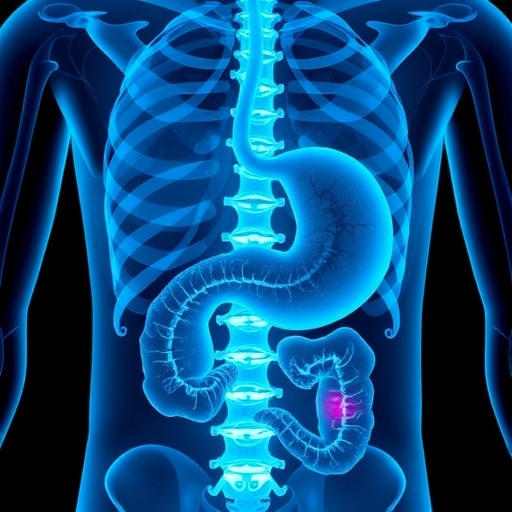Credit: Tabdanov/Provenzano, University of Minnesota
A new study by University of Minnesota biomedical engineers shows how they stopped cancer cells from moving and spreading, even when the cells changed their movements. The discovery could have a major impact on millions of people undergoing therapies to prevent the spread of cancer within the body.
The research is published today in Nature Communications, a leading research journal.
Researchers have known for years that tumors have patterns that are like little "highways" that cancer cells use to move within the tumors and ultimately toward blood vessels and adjacent tissue to invade the body. Patients who have high numbers of these patterns in their tumors have a lower chance of surviving the cancer.
What the researchers haven't been able to figure out until now is how the cells recognize these patterns and move along them.
In this study, the University of Minnesota team examined in the lab how breast cancer cells moved and used medicines to try to stop the cells. When they stopped the mechanisms that serve as the motor of the cells, the cells surprisingly changed the way they moved to an oozing-like motion, almost like a blob.
"Cancer cells are very sneaky," said senior author Paolo Provenzano, a University of Minnesota biomedical engineering associate professor and a Masonic Cancer Center researcher. "We didn't expect the cells to change their movement. This forced us to change our tactics to target both kinds of movements simultaneously. It's almost like we destroyed their GPS so they couldn't find the highways. This stopped the cells in their tracks. The cells just sat there and didn't move."
Ninety percent of cancer deaths are due to the cancer spreading throughout the body. Putting the brakes on cancer cell movement would allow physicians the time to use other therapies to improve survival rates of patients.
The researchers studied the cells in the lab in two-dimensional, engineered microenvironments, that are almost like a microchip with cells. These microenvironments mimicked how the cells behave as they do in a tumor and allowed researchers to speed up their research.
"By using these controlled network microenvironments, we were able to test hundreds of cell movement events in hours compared to one or two in the same time frame by imaging a tumor," said Erdem Tabdanov, a University of Minnesota biomedical engineering postdoctoral researcher and first author of the study.
The next steps for the research team are to expand the types of cancers studied and begin animal trials. Within a few years, the researchers hope to move to clinical trials in humans. They will also study how the medicines interact and what side effects may result.
"Ultimately, we'd like to find ways to suppress cancer cell movement while enhancing immune cell movement to fight the cancer," Provenzano said.
###
In addition to Provanzano and Tabdanov, the biomedical engineering research team included University of Minnesota associate professor Patrick Alford, graduate student Zaw Win, undergraduate student Vikram Puram, and visiting undergraduate student Ashab Alamgir (Cornell University).
The research was funded by the National Institutes of Health (NIH) Physical Sciences in Oncology Center Project; American Cancer Society Research Scholar Grant; National Science Foundation Career Award; the Masonic Cancer Center, University of Minnesota; University of Minnesota College of Science and Engineering; University of Minnesota Institute for Engineering in Medicine; and the Randy Shaver Research and Community Fund.
To read the entire research study entitled "Bimodal Sensing of Guidance Cues in Mechanically Distinct Microenvironments," visit the Nature Communications website.
Media Contact
Rhonda Zurn
[email protected]
612-626-7959
@UMNews
http://www.umn.edu
Original Source
https://twin-cities.umn.edu/news-events/researchers-stop-sneaky-cancer-cells-their-tracks http://dx.doi.org/10.1038/s41467-018-07290-y




